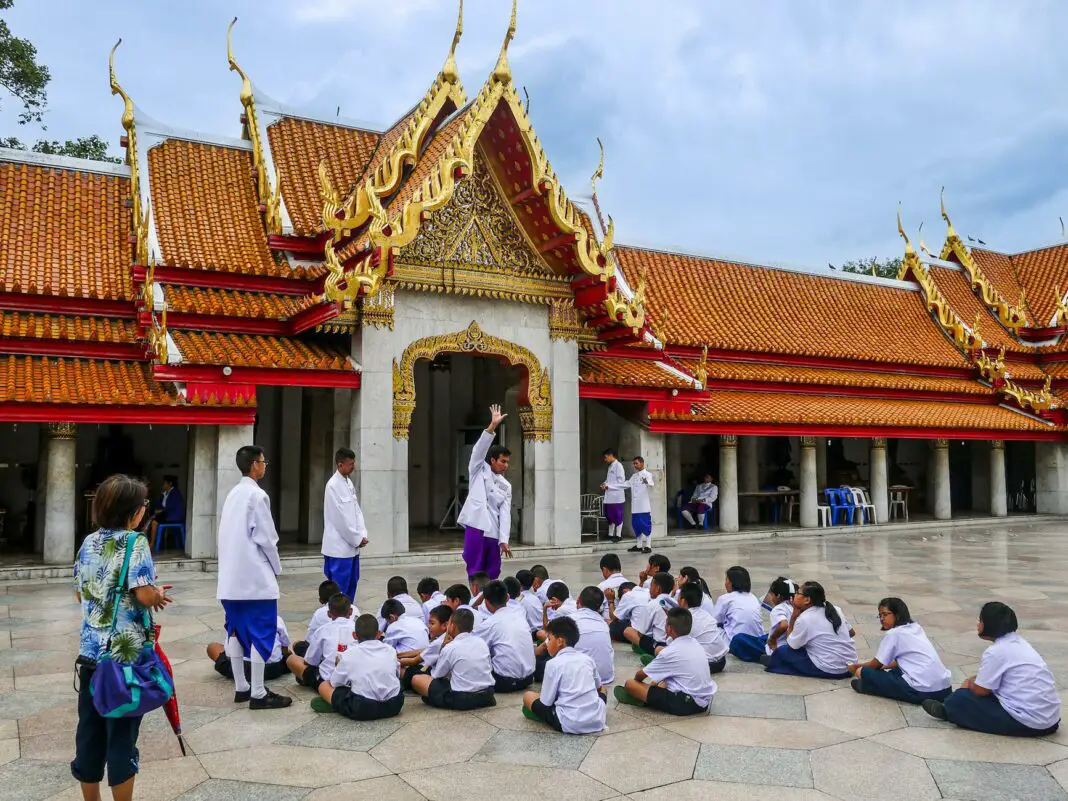Embarking on a trip to Thailand means immersing oneself in a tapestry of vibrant cultures, mesmerizing Buddhist architecture, and profound spirituality. As travelers wander through the majestic ruins and ornate temples, a question arises: Is Thailand’s Buddhist architecture the secret to inner peace? This blog post takes you on a journey through Thailand’s breathtaking landscapes infused with serene spirituality, while also exploring how these architectural marvels can foster mindfulness and tranquility.
This exploration will delve into the rich history of Buddhist architecture in Thailand, its architectural uniqueness, the transformative power of meditation spaces, and practical tips for integrating these experiences into daily life. By the end, you’ll have insights not just about Thailand’s cultural treasures, but also about how they can unlock a deeper sense of peace within yourself.
The roots of Buddhist architecture in Thailand intertwine deeply with the nation’s history, reflecting not only its spiritual evolution but also its cultural exchanges with neighboring countries. Originating from India and influenced by Khmer and Sri Lankan styles, Thai Buddhist architecture has developed a unique character over centuries. The grandeur of the ancient temples contrasts sharply with the rustic charm of smaller shrines scattered throughout the countryside. One can find that these structures serve as more than mere edifices; they represent the aspirations, philosophies, and stories that have shaped Thai identity.
Visiting iconic sites such as Wat Phra Kaew and Wat Pho allows travelers to connect with the legacy of Thai Buddhism, experiencing firsthand the awe-inspiring craftsmanship and artistry. Each curve and carving tells a story of devotion and reverence, meticulously designed to elevate the spirit and provide a sanctuary for meditation. The intricate murals and statues found within the temple grounds symbolize the continuous pursuit of enlightenment, creating a narrative that transcends geographical boundaries and resonates with souls seeking peace.
One of the captivating aspects of Thailand’s Buddhist architecture is its distinctive style, characterized by intricate details, vibrant colors, and serene ambiance. Temples are often adorned with golden stupas that reach for the heavens, manifesting both earthly beauty and heavenly aspirations. The use of reflective tiles, vivid mosaics, and elaborate gables creates an eye-catching spectacle that draws visitors in, inviting them to explore deeper. More than just visual aesthetics, the layout of these temples is intentionally designed to evoke a sense of serenity and encourage contemplation.
The juxtaposition of the temple structures against natural backdrops—lush greenery, tranquil rivers, and rugged mountains—enhances the overall experience, offering a visual feast that is both grounding and uplifting. Visitors often find themselves captivated by the serene atmosphere, the soothing sounds of wind rustling through trees, and birds singing as they stroll through temple grounds. Each moment becomes an invitation to reflect on their own journey while immersed in a landscape that echoes spiritual tranquility.
Exploring the meditation spaces within Thailand’s Buddhist temples reveals an intimate connection to inner peace that many travelers seek. Dedicated areas within these sacred structures are specifically designed for deep contemplation, fostering an environment where visitors can disengage from the chaos of daily life. Soft lighting, soothing colors, and ornate decorations create an atmosphere that nurtures mindfulness, inviting individuals to slow down and reconnect with their inner selves.
Participants often find themselves partaking in mindfulness practices or guided meditation sessions led by experienced monks. These sessions offer invaluable tools that enhance the experience of being at peace, transcending the physical act of traveling. Immersed in this spiritual ambiance, travelers report profound realizations and a deeper understanding of their own lives. By integrating meditation into their journeys, they discover how to carry that inner peace back to their own routines, enriching not only their travel experiences but daily life as well.
The act of visiting Thailand’s Buddhist architecture serves as a transformative experience, shifting the perspective of many travelers. Such interactions extend beyond mere sightseeing; they invite visitors to examine their thoughts, emotions, and aspirations. Through communal activities like food offerings and candlelight vigils, travelers feel a sense of belonging and shared purpose, which often leads to the emergence of empathy and understanding toward others—even those with differing backgrounds and beliefs.
Such experiences leave lasting impressions on individuals, urging them to embrace change and seek their own paths to enlightenment. Each interaction becomes a stepping stone to personal growth, encouraging a shift from a mindset focused on external pursuits to one deeply rooted in internal fulfillment. As visitors return home with newfound insights, they often express a desire to nurture the lessons learned during their time in the magnificent temples—a testament to how deeply these journeys resonate within.
Travelers seeking to explore Thailand’s Buddhist architecture thoughtfully can adopt several practices to enhance their experiences. Firstly, engage respectfully with the local customs and the spiritual significance of each site. When visiting temples, dressing modestly and observing silence shows reverence for the sacred nature of these spaces. Secondly, budgeting time for mindfulness meditation in temple courtyards can deepen one’s connection to the surroundings and further nurture inner peace.
Additionally, participating in local workshops or classes can offer valuable opportunities to understand the underlying philosophies of Buddhism. Many temples offer classes on meditation techniques or traditional Thai arts, allowing visitors to connect their experiences directly to their practice and gain a richer comprehension of spiritual teachings. Also, don’t hesitate to strike up conversations with monks or locals; their wisdom and stories can inspire travelers and contribute significantly to their journeys, impacting the way they approach their own personal quests.
Ultimately, the journey through Thailand’s Buddhist architecture is about far more than sightseeing; it serves as a wisdom-filled voyage toward understanding and embracing inner peace. Each temple stands as a monument to the intersection of art, spirituality, and culture, inviting travelers to pause and reflect on their own lives. This unyielding pursuit of enlightenment reflects our collective human experience—a universal desire to connect, understand, and find solace in an often chaotic world.
As experiences within these serene settings resonate long after the trip concludes, many find themselves better equipped to handle life’s challenges. The harmony between architecture and spirituality in Thailand intricately weaves a framework for self-discovery, inspiring visitors to cultivate mindfulness and embody peace in their everyday lives. The lessons learned within those hallowed walls can indeed become lifelong companions on a journey toward fulfillment.
As you conclude this immersive exploration of Thailand and its majestic Buddhist architecture, consider how these experiences can enhance your quest for inner tranquility. Embarking on a trip to Thailand is not merely about visiting stunning sites; it is about redefining your relationship with yourself and the world around you. The architectural splendor, infused with deep-rooted spirituality, not only serves as a pathway to historical understanding but also cultivates personal growth and mindfulness.
In seeking a deeper connection to inner peace, your journey may well unfold in layers, akin to the intricate designs of the temples themselves. Whether you’re planning your visit or reflecting on your experiences, embrace the transformative power of Thailand’s rich culture and architecture. Cultivate the lessons learned through mindfulness, and carry the serenity of those sacred spaces into your everyday life as enduring treasures.
- What is the best time to visit Thailand for temple tours? The ideal time is during the cool, dry season from November to February when the weather is pleasant and conducive to exploring various temples.
- Are there any specific customs to observe when visiting temples? Yes, visitors should dress modestly, removing shoes before entering temple areas, and maintain a respectful silence during visits.
- Can I meditate at temples without prior experience? Absolutely! Many temples offer meditation sessions for beginners, providing guidance and a welcoming environment to learn.
- What should I expect during a meditation session? Expect a tranquil atmosphere where a guiding monk will lead you through techniques, enabling you to achieve a state of calm and mindfulness.
- Is it necessary to know about Buddhism before visiting? While it’s helpful, it is not necessary. Many resources are available at temples, and interactions with monks can offer insights into Buddhist beliefs.
Image Credit: Pexels





